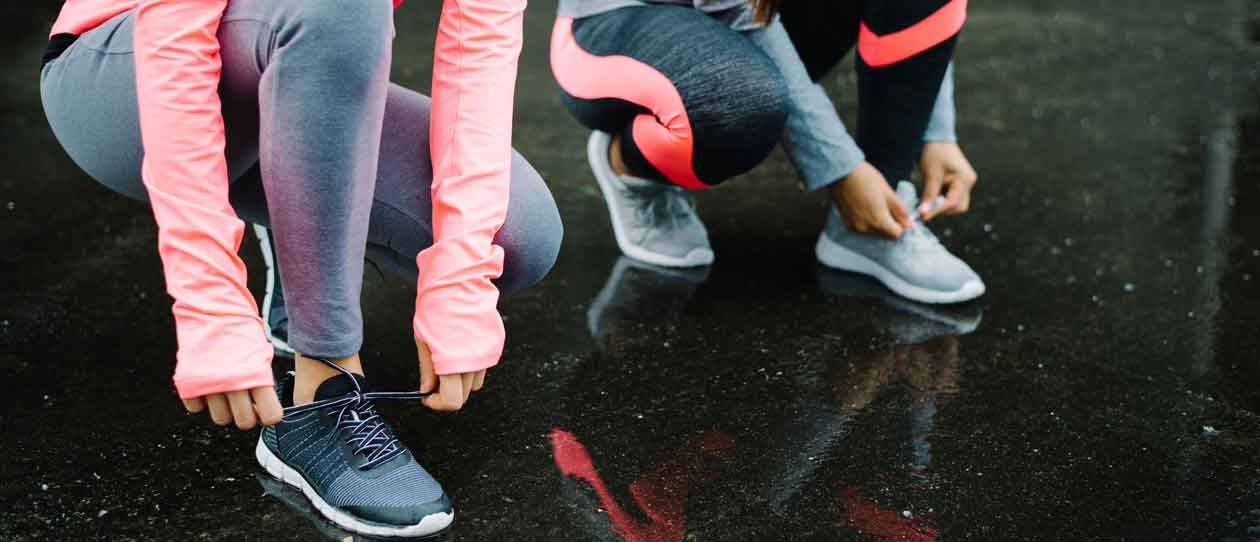
- Health hub/
- Tips & Advice on Cold, Flu & Boosting Immunity/
- Should You Exercise With a Cold or Flu?


Squats or sleep for a sore throat?
Most people catch one or two colds a year, but it doesn't have to wreak total havoc on your fitness routine.
Some physical activity when you're sick can be alright, but there are times when exercise can make things worse. Don’t elongate your cold or flu by exhausting yourself, but don’t let your cold stop you from reaching your fitness goals.
So how can you know if you are too sick to exercise? The best way to determine whether you should go to the gym, or go to bed is the extent and location of your symptoms. You will need to give yourself a "neck check".
You can exercise safely when…
If your symptoms are from the neck up, such as a sore throat, then it's okay to exercise. Physical activity won't slow down your recovery, as long as you don't elevate your heart rate and body temperature too much.
US researchers studied people who exhibited an upper respiratory tract infection or "head cold" over 10 days. They compared people who exercised for 40 minutes every second day with people who didn't exercise at all. They found no difference in symptoms at the end of the study, and that exercising with a minor cold did not alter the severity or duration of the illness.
Green light symptoms (yes, you can exercise)
- runny nose
- sneezing
- watery eyes
- sore throat
It's best to rest when….
If your symptoms are below the neck, such as a tight chest, coughing and upset stomach, then your body needs rest. Exercising with major cold symptoms, particularly a fever, will prolong your illness and can be dangerous. Physical activity will compromise your immune system as the body focuses on energy production and muscle function instead of fighting the illness.
If your oral temperature is at or over 37.5 °C (99.5 °F), your body is fighting an infection, and needs rest to recover. Listen to your body, and take comfort that you won't lose any conditioning by taking a few days break.
Still not sure if you're okay to exercise? Be sure to ask a doctor for advice. You can always test out napercising instead!
Red light symptoms (best to avoid exercise)
- Coughing
- Fatigue and tiredness
- Congested or tight chest
- Chills
- Nausea or upset stomach
- Muscle aches
- Diarrhoea
- High temperature / fever
Can you sweat out a cold or flu?
When you have cold and flu symptoms, attempting to exercise or "sweat it out" may actually allow your symptoms to become worse. Too much sweat can dehydrate you at a time when you actually need extra fluids to loosen congestion. Dehydration can also dry the mucous membranes in your respiratory tract, worsening a stuffy nose or scratchy throat.
So if you have the green light symptoms, be sure to drink plenty of water when exercising. And if you are at a gym, be sure to wipe down your equipment after use and wash your hands after your workout to prevent spreading and gathering any germs.
Avoid fatigue and ease back into your activity
As your symptoms diminish, ease back into exercise with caution. Start out gently to see how you feel, and if the body responds well, gradually increase the intensity and duration over a few days. Avoid jumping straight back into your old level of effort - 100 burpees as fast as possible is probably not the best way to get back into exercise. Modify your intensity until all the symptoms have completely disappeared.
For example, if you normally take a spin class, swap it out for yoga for a few days. Crossfitters can scale workouts and take it slow, and those doing strength training can deload. If you listen to music while training, it might help to choose a slower tempo song to remind you to slow it down.
Did you know exercise can keep the sniffles at bay?
Once you are over your cold, exercising will actually help you keep healthy. A study in the British Journal of Sports Medicine, found that upper respiratory tract infections –such as sore throats and sinus infections – are reduced in physically active adults.The researchers followed 1,002 adults for 12 weeks and monitored their upper respiratory tract infections. For those that exercised or were physically active five or more days a week the chance of such infections was reduced by 43%.
Fire up your fitness
It can be hard to commit to being the healthiest version of yourself, but the benefits outweigh the effort. If you need motivation, let Blackmores help you Fire up your Fitness with an action plan.Committing yourself to Being a Well Being is the first step!



